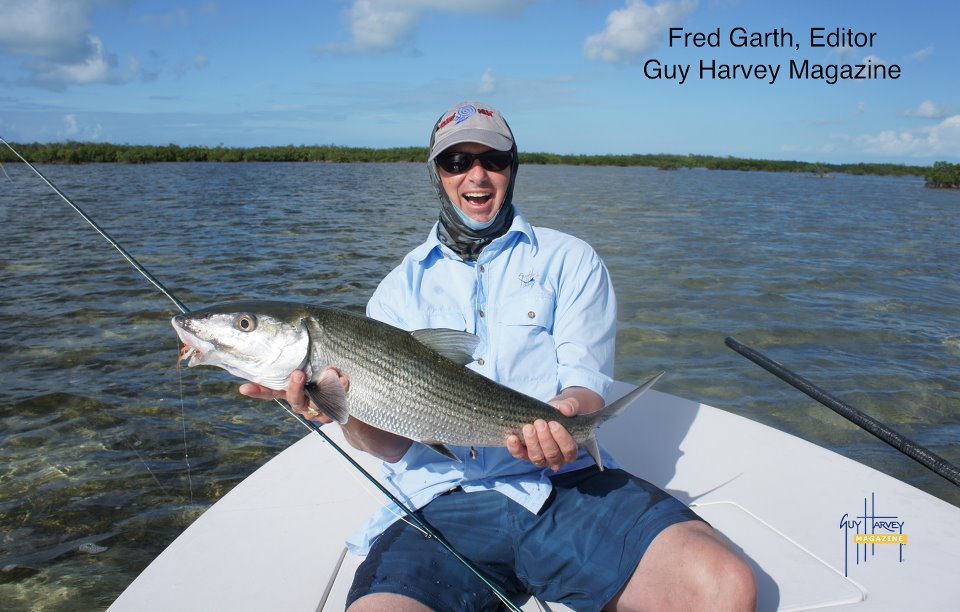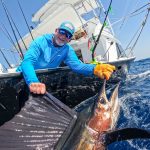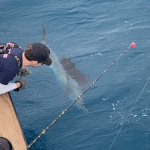Article Courtesy: Guy Harvey Magazine | By: Editor-in-Chief Fred Garth | Originally published April 2, 2015 | Please click here for original article.
Above: Editor-in-Chief of Guy Harvey Magazine – Fred Garth
I was a teenager in the late 1960s when Woodstock, the Vietnam war and bloody racial battles were all being broadcast on our new fangled color television sets. Pollution was also a hot news topic, along with hippies, drugs and way too much hair. It seemed like there were protests everywhere about everything.
As a kid, I was haunted by these issues and wrote these words as a 14-year-old in 1971:
Wars, riots, drugs, pollution,
For any problem, there’s always a solution.
If something isn’t done soon and fast,
How long do you think our race will last?
We all have to pitch in and use our head.
And if this isn’t done soon, we’ll all be dead!
I don’t remember being such a morbid little twit but hey, it was a weird era and I was impressionable. But, as an avid young fisherman, the thought of catching too many fish never entered my mind. Back then our catch limit depended on one thing: the size of our cooler. Actually, that’s not totally true. I remember a few trips when the cooler was overflowing with bluefish but we were still be catching them like crazy. My dad made us scoop buckets of seawater into our Boston Whaler so we could just throw the fish into our floating aquarium. The bluefish would dart around in four inches of water looking for a way out while we’d keep on hauling them in. This worked great until a particularly angry bugger chomped into my dad’s foot and bit off a chunk of his little toe. I learned some choice words that day. The next day he bought an extra cooler, thus ending his motorized aquaculture experiments.
I’ve often said that my father, God rest his fishy soul, would not have understood catch and release as a concept. His goal was to catch and feed. And with seven kids, we were needing a lot of feeding. Then from about 1970 to 1980, sportfishing blasted through puberty into adulthood with the proliferation of fishing boats, high HP outboard motors and marine electronics. Red snapper and grouper became easy targets and we soon learned that the fishery is not infinite as we once thought. Regulatory agencies set up rules that seemed as complex as DNA coding but have, for the most part, accomplished their goals.
Now, we’ve entered the age of “responsible fishing”. And, while some bubbas are threatened by the thought of being responsible – they believe in more beer, more fish, more blood and more speed – the majority of fishermen understand the need to preserve and protect the oceans. So, the question is: what does responsible fishing really mean? First, it’s following the law, even if you believe the rules were made by idiot trolls who don’t know a fish from a knish. Second, only keep what you and your friends will eat. Even if you don’t catch your limit, throw back what might get wasted. Third, when you catch and release, do your very best to make sure the fish will live. Proper venting, forcing water to flow over their gills, etc., all make a difference. Otherwise, releasing is just an exercise in futility. Fourth, always use circle hooks. They’ve proven not to kill fish. Fifth, don’t throw fishing line overboard. This is all common sense stuff but every little bit does help. There are plenty more ways to be responsible fishers and boaters, such as not pumping out your nasty bilge water into sensitive waterways or making sure you wash your boat with biodegradable soaps, which are readily available, by the way. And, If you don’t like the shift toward responsible fishing, then you might want to consider another sport. This is no longer the sixties (thank goodness) and the resource is getting more and more pressure from sport and commercial fishermen. As I said many years ago, for any problem, there’s always a solution. Even if it’s against our nature, being responsible is something we have to learn to live with.






